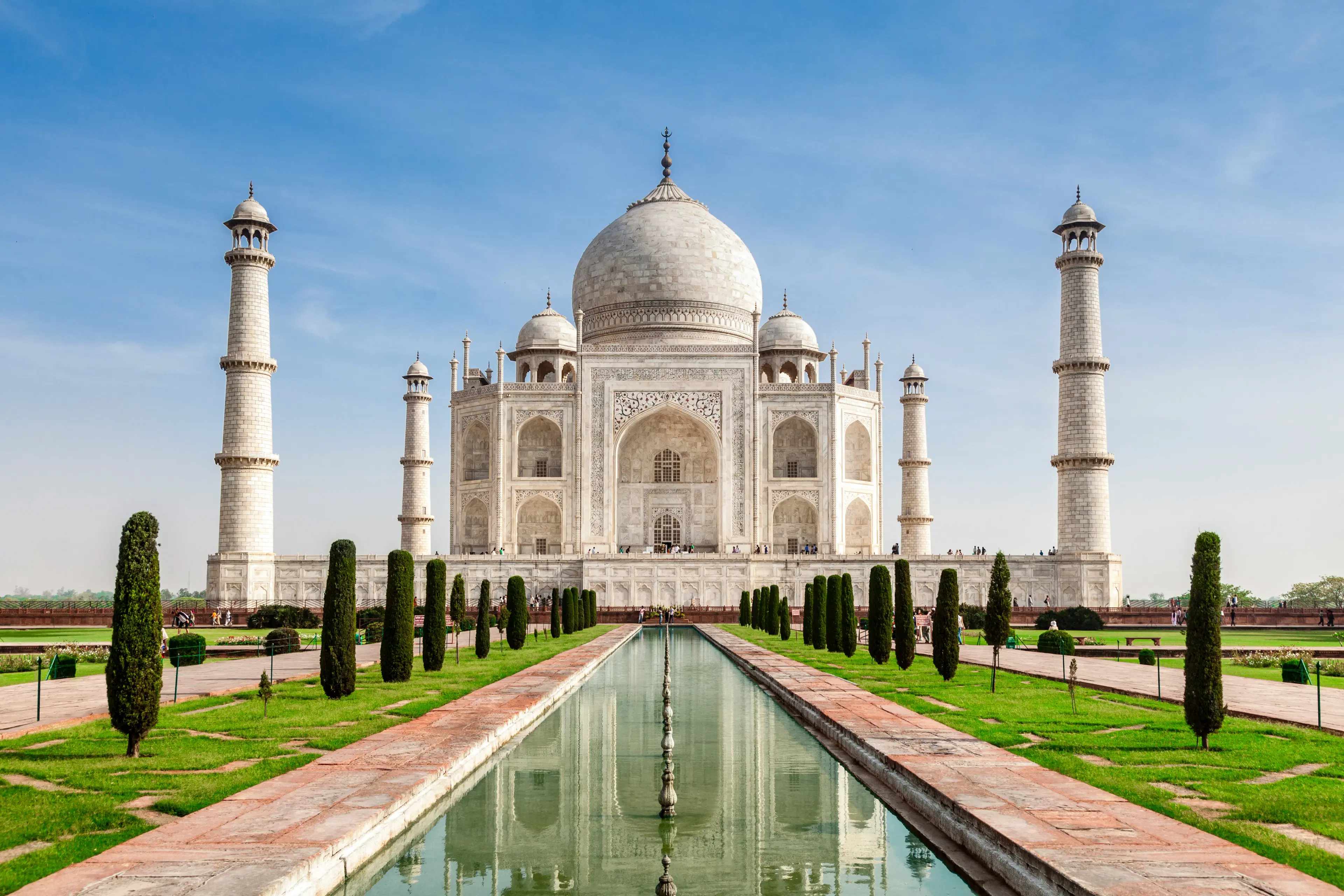
Flights
•03 min read

Mughal architecture casts a spell that transcends time, and few monuments evoke this magic like Itmad-ud-Daulah's Tomb—fondly known as the Baby Taj—and the majestic Taj Mahal. These royal masterpieces not only showcase the artistic genius of their era but also play pivotal roles in the rich tapestry of Indian history. In this post, we compare these Mughal marvels, exploring their origins, architectural brilliance, and the cultural footprints they leave behind, while delving into why the Baby Taj remains a cherished precursor to the Taj Mahal.
Constructed by the influential queen Nur Jahan for her father, Mirza Ghiyas Beg, Itmad-ud-Daulah's Tomb stands as a remarkable expression of early Mughal design. Often celebrated as the first instance of extensive white marble usage, this monument set the stage for future Mughal garden tombs. The intimate structure, with its intricate detailing and well-planned garden layout, serves as a precursor to the grandeur witnessed in the Taj Mahal and is deeply rooted in Itmad-ud-Daulah history and the legacy of the Tomb of Mirza Ghiyas Beg.
The Taj Mahal, commissioned by Emperor Shah Jahan as an eternal mausoleum for his beloved wife Mumtaz Mahal, has become one of the world’s most celebrated monuments. With its stunning symmetrical design, monumental scale, and the extensive use of white marble, the Taj Mahal has achieved global recognition and holds the prestigious honor of being a UNESCO World Heritage Site. As an emblem of enduring love, its legacy overshadows many Mughal era monuments while continuing to charm millions of visitors every year.
Known as the Baby Taj, Itmad-ud-Daulah's Tomb boasts exceptional craftsmanship that enhances its delicate features. The tomb’s intricate pietra dura inlay work and pristine white marble work harmonize beautifully with its orderly Charbagh garden layout. Despite its smaller scale, every detail speaks volumes of the refined Mughal architecture tomb style. Its design elements not only celebrate the artistry of the period but also underscore the monument's role as a forerunner to later gems such as the Baby Taj Mahal and other Mughal garden tombs in Agra.
In stark contrast, the Taj Mahal captivates with its monumental presence and iconic dome. Its symmetrical composition, expansive marble surfaces, and elaborate inlay work create a visual spectacle that has inspired countless admirers. While both monuments share similar artistic techniques, the Taj Mahal's grand scale and intricacy create an immersive experience that leaves a lasting impression. The juxtaposition of delicate craftsmanship in Itmad-ud-Daulah's Tomb with the overwhelming grandeur of the Taj Mahal provides a fascinating perspective on the evolution of Mughal architecture.

Itmad-ud-Daulah’s Tomb is more than just a beautiful structure; it is a milestone in the evolution of Mughal architecture. This early example of intricate design influenced subsequent monuments by introducing techniques that became synonymous with later icons like the Taj Mahal. Its historical importance goes beyond aesthetics—this white marble tomb in Agra is a key Agra tourist attraction that captures the spirit of Mughal innovation and cultural pride.
The Taj Mahal has transcended local beauty to become a universal symbol of eternal love and artistic perfection. Its influence on global perceptions of Mughal architecture is profound, reminding visitors that art and architecture can communicate universal emotions. When compared to the Baby Taj, the cultural and emotional resonance of the Taj Mahal is magnified, yet both monuments collectively enrich our understanding of India’s Mughal legacy.
For travelers seeking a more intimate connection with history, visiting Itmad-ud-Daulah’s Tomb offers a peaceful retreat from the bustling tourist spots. The entry process is straightforward, with clearly defined Itmad-ud-Daulah timings and ticket prices that vary for domestic and international guests. The relatively lesser crowds here allow visitors to fully immerse themselves in the serene ambiance of the Charbagh gardens and marvel at the detailed craftsmanship, making it a perfect spot for those who enjoy budget-friendly cultural excursions.
The Taj Mahal, on the other hand, promises an awe-inspiring experience with its vast scale and meticulous design. Visitors are advised to plan their visits during the early morning or late afternoon to avoid the intense midday heat and the larger tour groups. Alongside the main attraction, nearby points of interest offer additional layers of historical and cultural context. Although both monuments provide enriching experiences, the Taj Mahal’s scale and status create a distinct and memorable atmosphere that contrasts with the quieter charm of the Baby Taj.

Did You Know? Itmad-ud-Daulah’s Tomb is often considered the first Mughal monument to extensively use white marble, setting the stage for the Taj Mahal’s iconic design.
Mirza Ghiyas Beg, the father of Nur Jahan, is buried in Itmad-ud-Daulah’s Tomb, along with other family members.
The entry fee for Itmad-ud-Daulah’s Tomb varies for domestic and international tourists. Check local tourism websites for updated pricing.
Yes, Itmad-ud-Daulah’s Tomb is a must-visit for its intricate architecture, serene gardens, and historical significance as a precursor to the Taj Mahal.
The Baby Taj features Mughal architecture with white marble, pietra dura inlay work, and a symmetrical Charbagh garden layout.
Both Itmad-ud-Daulah's Tomb and the Taj Mahal offer unique windows into the opulent world of Mughal art and architecture. The Baby Taj, with its intimate charm and refined details, serves as a stepping stone towards the majestic beauty of the Taj Mahal. This comparison not only deepens our understanding of Mughal history but also encourages modern travelers to appreciate the subtle nuances of India’s rich heritage.